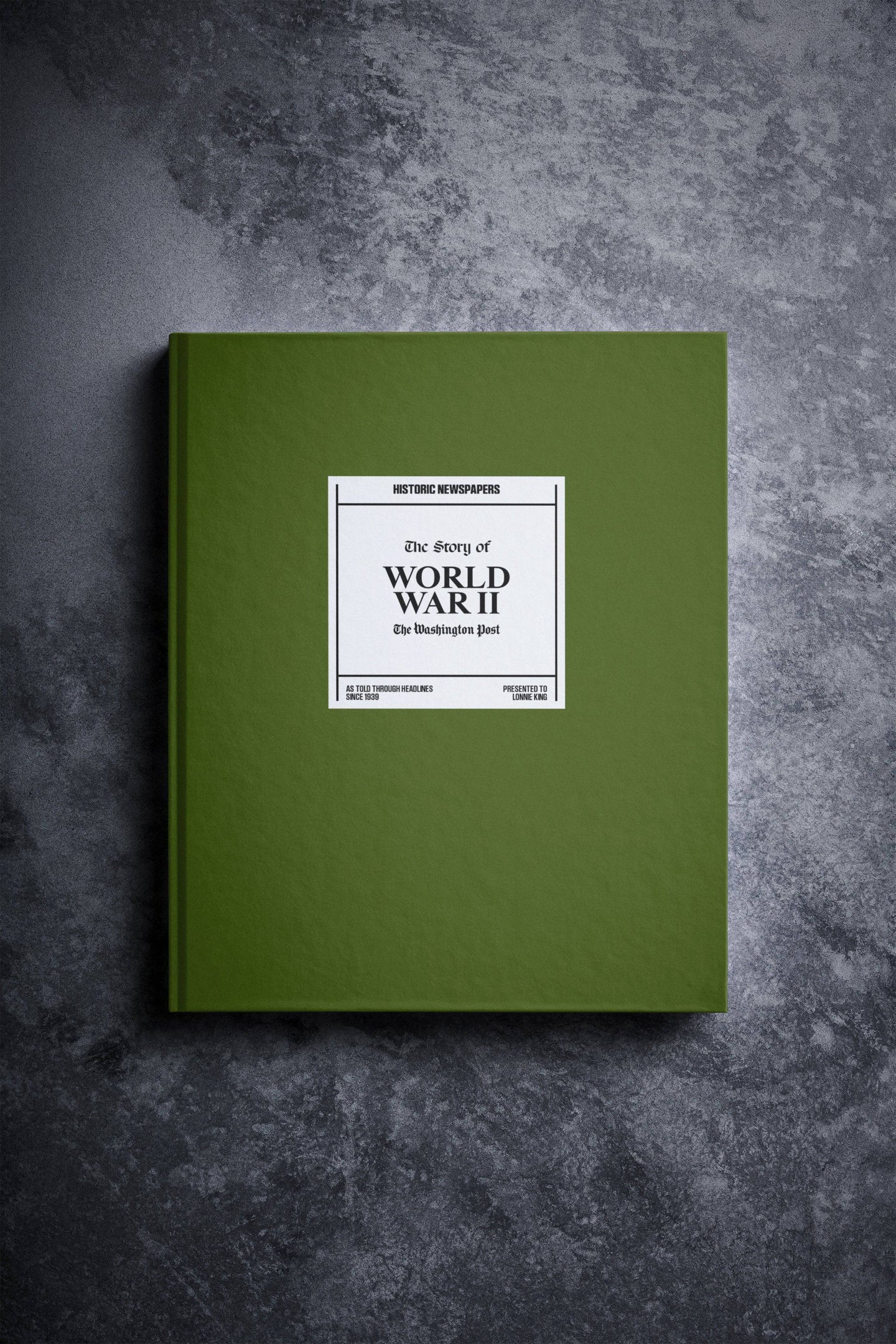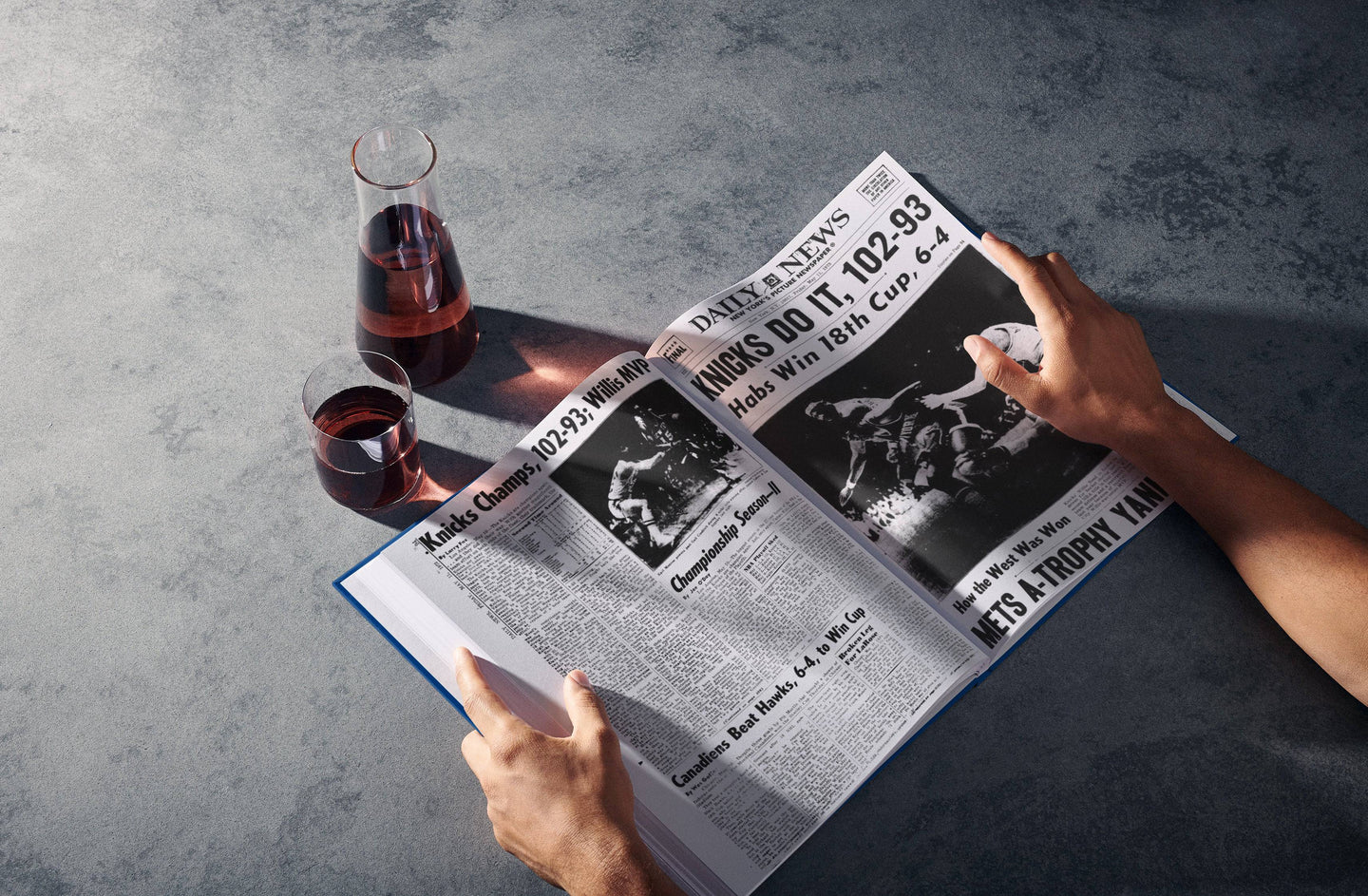American journalism experienced a significant milestone when the Pentagon Papers were published by the New York Times in 1971. This was the first time a national newspaper had managed to obtain such a top-secret government document, and the publication was able to reveal many government actions to the public that were being kept a secret.
In this blog post, we explore the publication of the Pentagon Papers and their impact, 50 years after they were published. To examine a genuine, original newspaper from the time, you can explore our 1971 newspapers archive, and even explore a newspaper from the date the Pentagon Papers were released here.
Turn the page to:
- What Were The Pentagon Papers?
- Who Released The Pentagon Papers?
- The Pentagon Papers Are Leaked
- What Did The Pentagon Papers Reveal?
- President Nixon Reacts
- New York Times vs. United States – The Supreme Court Decision
- From The Pentagon Papers to Watergate
What Were The Pentagon Papers?
The Pentagon Papers was the name of a Department of Defence study about the United States’ political and military involvement in the Vietnam War between 1945 and 1967, creating what was intended to be a top-secret government document. The Vietnam War was becoming contentious in the United States at this time, with much of the public beginning to oppose American involvement and protesting against the war. This was a crucial time in the United States, and the publication of the papers gave the public greater reasons to distrust the government.
Robert McNamara, the U.S. Secretary of Defence, requested in 1967 that analysts create a study of American military and political involvement in Vietnam, beginning at the end of World War II and continuing to the present day. Classified material formed the bulk of the later-known Pentagon Papers, creating a document bound into 47 volumes containing a narrative of 3,000 pages and 4,000 pages of supporting documents.
The publication of the Pentagon Papers had difficult consequences for the United States government, and caused a chain of events leading to Richard Nixon’s resignation as President after the Watergate Scandal the following year. The leaked documents contained significant material about the years of American involvement in the Vietnam War which the Nixon administration were furious about being made public.

The New York Times Pentagon Papers
Image: Flickr
Who Released The Pentagon Papers?
The man responsible for leaking the Pentagon Papers was Daniel Ellsberg, a military analyst who began to oppose the Vietnam War. Ellsberg had served as a Marine Corps officer from 1954 to 1957, then worked as a strategic analyst at the Department of Defence and the RAND Corporation. To start with, Ellsberg favoured American involvement in Indochina and helped create the 1967 study.
Ellsberg’s career led him to be very involved in the escalation of American involvement in the Vietnam War, and he was one of roughly 36 scholars contributing to the highly-classified study. He had access to much of the study and he came to conclude that the American public had been greatly misled by the administrations of Dwight D. Eisenhower, John F. Kennedy, and Lyndon B. Johnson. As well as this, Ellsberg believed the current President, Richard Nixon, was continuing the war without a real reason, prolonging American suffering.
By 1971, the war was dragging on with over 500,000 American troops in the country. He believed the war was unwinnable and thought the public should know about the government’s war decision making. Ellsberg then decided that the public should be made aware of the detailed information in the Pentagon Papers.

Daniel Ellsberg, the military analyst responsible for leaking the Pentagon Papers
Image: Wikimedia Commons
The Pentagon Papers Are Leaked
Daniel Ellsberg gradually began copying pages of the Pentagon Papers and approached staff members on Capitol Hill, attempting to interest those who worked for members of Congress in the documents. With the staff members unwilling to accept the documents or skeptical of his findings, Ellsberg decided to go to the press instead and the newspaper that published the Pentagon Papers was the New York Times.
Neil Sheehan was a reporter for the New York Times, and received sections of the document from Ellsberg. Sheehan had previously been to Vietnam as a war correspondent, so he was aware of the significance of the documents and passed them onto his editors. A secret newsroom at a Manhattan hotel near the New York Times headquarters was created for a team of editors to read and review the documents for newsworthy content, and editors would hide away to go through the classified document outlining the government’s relationship to the Vietnam War.
Since there was so much information in the document, the editors decided the material should be revealed as a series, with the first appearing on the front page of the newspaper on June 13, 1971. The newspaper was aware and cautious about the fact that the material being revealed was classified by the government and they could take legal action.

President Richard Nixon
Image: Flickr
What Did The Pentagon Papers Reveal?
The Pentagon Papers revealed critical information about the United States’ activity in the Vietnam War – information which was supposed to be kept classified and not shared outside of the government. The papers also helped confirm suspicions among some of the public that, in reality, the U.S. government had played a much more active role in creating conflict. The exposure of this information came at a critical time when the public were already becoming increasingly opposed to the war.
The Pentagon Papers made it clear that the Lyndon B. Johnson administration had not informed the public about the true nature of American military activity in North Vietnam, Cambodia and Laos, as well as the government’s involvement in the overthrow of the South Vietnamese President Diem in 1963. With President Nixon hoping for reelection in 1972, the revelations were particularly embarrassing for the government. While they didn’t reflect the policies of Nixon’s administration, Nixon was responsible for dragging out the war and continuing American involvement, which was believed by the public to be seemingly pointless.
The public were distressed to hear about this information, since they knew the government had been manipulative in order to justify the war.
President Nixon Reacts
Upon reading about the first instalment of the Pentagon Papers series in the New York Times, President Richard Nixon was becoming distressed.
The revelations revealed on June 13, 1971 did not cast the Nixon administration in a bad light or do any direct harm to their actions. The papers instead made the administrations of Lyndon B. Johnson and John F. Kennedy look bad, who were Nixon’s predecessors and presidents he disliked. However, many people involved in the government were upset by the leaked papers and the Nixon administration worried that some of their secret dealings could be made public in the future too.
President Nixon decided to take action when the second instalment of the series was printed the following day on June 14, 1971. The U.S. Department of Justice sent a telegram to the New York Times headquarters to request that no more material be published in the newspaper. The New York Times responded by saying they would adhere to a court order, but if not, they would continue publishing. The newspaper then printed a significant headline on June 15, 1971:
“Mitchell Seeks to Halt Series on Vietnam But Times Refuses”
New York Times vs. United States – The Supreme Court Decision
After reading the headline on June 15, 1971, the federal government took the matter to court, and managed to obtain an injunction to prevent the New York Times publishing any more documents.
While the New York Times was unable to share more information, the Washington Post started to publish material that had been leaked to them, so the documents were still being made public. Daniel Ellsberg also found himself to be the subject of an F.B.I manhunt when it was revealed he was behind the leaked papers.
The government claimed that the information contained in the Pentagon Papers posed a threat to national security and the federal government had an important reason to suspend their publication. However, the New York Times lawyers claimed that the public has a right to read the information in the papers, and believed they weren’t a danger to security. They believed the papers held historical significance and wouldn’t directly affect the current situation of the country.
On Saturday, June 26, 1971, arguments took place at the Supreme Court to come to a conclusion on whether the papers should be published. On June 30, 1971, the Supreme Court formally released their decision that newspapers did in fact have the right to print the Pentagon Papers and inform the public of the contents. On July 1, 1971, the front page of the New York Times read:
“Supreme Court, 6-3, Upholds Newspapers On Publication of the Pentagon Report; Times Resumes Its Series, Halted 15 Days.”
From The Pentagon Papers to Watergate
While the information in the Pentagon Papers didn’t directly impact the Nixon administration, the fact the court had granted their publication made the government even more wary of what information could be made public in the future.
Daniel Ellsberg was indicted on criminal charges which included espionage, conspiracy and the robbing of property belonging to the government, and his trial began in 1973. However, the charges were dropped when it was discovered that in September 1971, a team from the White House, known as “the plumbers” broke into Daniel Ellsberg’s psychiatrist’s office in the hope of finding information about him that would dishonour him.
The men who broke into the office were in fact the same men who were involved in breaking into the Watergate complex a year later in 1972, leading to a scandal that would cause President Nixon to resign from office in 1974.


























Follow us